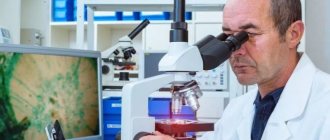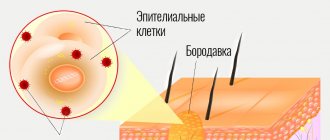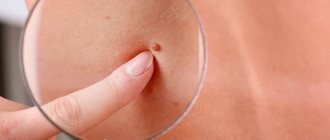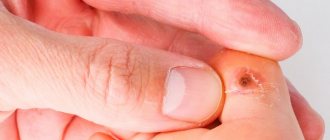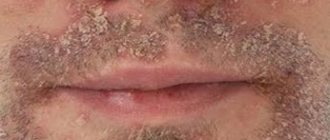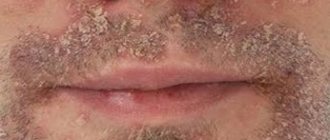Removing the root of a wart is a procedure for complete excision of skin tissue mutated under the influence of the human papillomavirus. It is an integral part of HPV treatment, because reduces the likelihood of disease relapse. The procedure can be carried out using various methods of traditional and folk medicine. All of them differ in the degree of effectiveness, speed of achieving results, accessibility and level of safety. This article provides detailed information on how to remove the root of a wart using various methods.
Warts - what are they?
Neoplasms of a benign nature of viral etiology that develop on the epithelial and mucous membrane are called warts.
Most often they occur in young people or children, but there are exceptions; they can also appear in older people. All warts clinically have the form of a papule, which in turn is an elevated formation on the skin. Under a microscope it resembles broccoli. It grows deep in the layers of the skin and has enhanced nutrition.
There are the following types of warts:
- vulgar or ordinary type,
- flat type, characteristic of adolescence and childhood,
- plantar warts,
- warts of old age,
- and pointed type (condylomas).
The treatment process affects all types differently, that is, some of them can be quickly treated, and some are eliminated by surgery or laser therapy.
What factors cause warts?
Warts are a contagious infection, that is, the virus is transmitted through direct contact or through the use of other people's bath items. The use of foot hygiene products or someone else's shoes are the main causes of plantar warts. Plus, there must be predisposing reasons for its development, such as microcracks or scratches of the skin.
Plantar papillomatosis does not have a specific localization; it can appear anywhere, but most often it prefers thickened areas. Papillomas can be single or multiple.
Prevention
Maintaining personal hygiene will prevent the formation of papillomas. After contact with strangers, you need to wash your hands and use antiseptics. Any abrasions or cuts must be immediately treated with iodine, otherwise the microbes that get there may begin to actively multiply. An important aspect is proper nutrition, which will help strengthen the immune system and prevent the activation of the human papillomavirus. Various diseases must be treated promptly as they have a detrimental effect on the immune system.
When working with toxic products, it is imperative to use special equipment that will protect the skin from injury. In public places - swimming pools, saunas - you need to use only personal belongings.
What are the symptoms of papillomatosis or warts?
Depending on the type, warts are located in different places on the human body and clinically manifest differently. The ordinary type affects the skin of the fingers and the palm of the hand, which is typical for adolescence. Filiform warts love the skin of the neck, face and armpits. The flat type is common among young people and appears as groups on the facial skin that look and feel hard and smooth.
When the first symptoms appear, a serious question arises: “how to get rid of plantar warts?” After all, in people suffering from excessive sweating, they grow very quickly and can reach up to 2 cm in size. And this kind of scale completely interferes with normal walking.
Drugs from pharmacies
If it is not possible to contact a professional, you will find the necessary medications in pharmacies. However, one should be aware of the lower effectiveness compared to treatment in medical institutions. Accordingly, such treatment may be significantly delayed. In this case, it will be difficult for you to understand whether the wart has been removed along with the entire root.
However, even after treatment in the clinic, you will need a test purchase at the pharmacy. In any case, it is necessary to purchase antiviral and immunomodulatory drugs. Of course, in this matter you need to rely on the advice of a specialist examining you.
There are medications with local and systemic effects (ointments, special patches, tablets, creams). The most common options are: Cryopharm, Superchistotel, Stefalin, Salipod (salicylic patch), it would not be a bad idea to drink vitamin C.
Plantar warts, treatment
There are a number of successfully applied actions that show exactly how to remove a plantar wart in a hospital or at home.
There are several ways to get rid of warts:
- plantar warts treatment with drugs,
- surgical removal of warts,
- laser removal,
- cryocoagulation,
- treatment of plantar warts with folk remedies.
Reduced immunity or chronic somatic diseases (diabetes mellitus, cancer, pernicious anemia, post-operative conditions) are a field for the development of warts. In these situations, urgent removal of plantar warts is appropriate, otherwise it is fraught with complications. The rehabilitation period, that is, skin restoration in such patients, is very slow, so you need to use the most optimal method with a quick healing effect - laser removal.
Cryodestruction method (cryotherapy)
In fact, this method for getting rid of plantar viral warts is very effective in terms of complete cure and 100% elimination of re-infection. Liquid nitrogen freezes the wart and completely destroys it. Watery blisters appear around it, and the wart itself dies. Within a week, the dead layer is rejected, and a slight inflammation appears in its place, which slowly disappears. If the pain is unbearable, you can apply anesthetics.
Symptoms
Changing the color shade of a wart has its own characteristic features. For example, the growth may not completely change, but form only one black dot in the center. Often several such points appear, which are a consequence of blockage of the capillaries of the wart.
If black spots form on the plantar growth, this may indicate that dirt or a subcutaneous infection has entered it, which can only be eliminated with the help of medications. If warts with blackheads are not treated in a timely manner, the symptoms of papillomavirus may spread from the plantar area to other areas.
Another characteristic feature of the blackening of a new growth is a change in the color of its roots to a corresponding shade. Initially, the roots of the growth are flesh-colored, similar to skin tone.
Over time, under the influence of provoking factors, the root, filled with blood vessels, darkens. If black roots stick out from a wart that has already fallen off, this does not indicate a complete cure of the pathology, since in this case relapses are possible.
Removing warts with nitrogen
Cryodestruction is a method of removing warts by exposing them to liquid nitrogen.
In most cases, warts with black rods fall off, the roots turn black and die, and the blood in them dries up, creating blood clots.
The latter can have a negative impact on health. It is for this reason that immediately after a growth with a black root falls off, it is recommended to visit a doctor as soon as possible, who will prescribe the most effective therapy.
Neoplasms of this type, which are black or dark brown in color, often form in older people. In this case, there is no health threat as such.
Is there a cure for plantar warts?
Cantharidin is a drug for the topical treatment of warts. In parallel, using it with salicylic acid - the result is ideal. The pathological neoplasm is smeared with a cotton swab, then the wart dies off. The doctor removes the area, cauterizing it and treating it with antibiotics. After 7 days, complete recovery will occur. There is one caveat - a scar remains.
Imiquimod is another medication that comes in the form of an ointment or cream. The product is based on an antiviral drug that acts on the papilloma virus.
Diagnostics
Examination of the emerging tumor is necessary to determine the exact type of human papillomavirus and to subsequently carry out the correct treatment. Which doctor should I contact for help? If a growth of any shape or color appears on the skin, you need to visit a dermatologist. Before removing the root of a wart on a finger, it is necessary to undergo diagnostics:
- Polymerase chain reaction (PCR) is a test that detects the presence of viral DNA in the blood. The degree of oncogenicity of the strain and its quantitative indicator are established.
- When removing the root of a papilloma on a finger or other part of the body, a histological examination may be prescribed. In this case, material is collected for analysis immediately before removal of the wart and after the operation. All affected skin layers are examined. A biopsy determines the benign quality of the seals and the possible degree of their degeneration.
- Digene HPV test is the most reliable HPV test; it makes it possible to detect a specific strain of the virus, the degree of oncogenicity, and concentration in tissues. The results obtained help to build the most accurate prognosis of the disease.
How to treat plantar warts with folk remedies?
There are several ways to eliminate plantar warts, the traditional treatment is as follows:
- raw garlic – rub the wart with raw garlic for a month until it disappears completely,
- great celandine - we make lotions from the freshly squeezed juice 2-3 times a day, repeat the procedure for 3 weeks, during which time the wart disappears,
- chalk - we take regular chalk, crumble it and put it on the wart, tying it with a tight bandage, we carry out the procedure for a month, the result is excellent,
- ginger root and smoldering wormwood leaves - the product has a similar composition to antiviral drugs, so the effect is colossal, within a week the warts were gone.
Make an appointment by phone or.
Causes of darkening
Once the virus enters the human body, it settles there and does not manifest itself clinically until a certain case.
The appearance of black dots on a wart is caused by damage to blood vessels, progression of papilloma growth, trauma to the wart, the use of medications, and the use of local cauterizing agents.
Blackening and subsequent falling off of the wart is considered a sign of self-healing. The appearance of black dots and changes in the color of the wart are indications for visiting a doctor.
Treatment consists of removing the wart using various methods.
This can include a weakening of the immune system or any change in hormonal levels, for example, during pregnancy or puberty. It is at this time that the tumor begins to grow and apparently rise above the skin.
At the beginning of its growth, the wart is flesh-colored with a different shade. The dark color of the tumor is usually found in older people.
It is no less rare for growths to turn black in women during pregnancy. This can be explained by the fact that it is during this period that the body undergoes great changes, including in the hormonal system.
Damage to the blood vessels supplying the tumor
In this case, a blood clot forms, which causes the wart to change color to a darker shade.
Progressive stage of papillomavirus
It is during this period that blackening of the wart, as well as an increase in its size, is most often diagnosed. In nearby areas, similar small elevations may form.
Injury to the neoplasm
As a rule, this is observed in places where there is open access to warts, for example, on a finger or toe, on the neck or face.
In the latter case, injury occurs during shaving, as well as when putting clothes over the head, which can catch the growth. If the top layer of the tumor is damaged, pathogenic microorganisms can penetrate deep into it, thereby causing inflammation.
It is the inflammatory process that causes the blackening of the wart, as well as the occurrence of itching, peeling, and discharge of purulent masses.
Blackening as a side symptom of taking medications
In some cases, this is observed when using hormonal drugs: contraceptives or corticosteroids.
Use of a local cauterizing drug
Blackening of the wart in this case is a natural phenomenon that signals the success of the treatment. In this case, gradual tissue death occurs and further formation of a crust at the site of growth.
Strong immune system
Blackening and subsequent falling off of the wart without the use of any therapy can be observed in children and adolescents whose immune systems are strong enough to overcome the papillomavirus on their own.
Why can our articles be trusted?
We make health information clear, accessible and relevant.
- All articles are checked by practicing doctors.
- We take scientific literature and the latest research as a basis.
- We publish detailed articles that answer all questions.
In some cases, blackening of the growth is accompanied by pain, and there are reasons for this. Often, pain occurs after injury to a wart, with secondary infection of the wound, as well as with malignancy - malignant degeneration of the tumor.
If there is pain and darkening of the growth localized on the hand, this may be a consequence of exposure of the skin to a chemical substance, for example, used when cleaning a room.
If the blackening of such a neoplasm occurs gradually, for example, over 2-3 months, this is normal.
A rapid change in the color of the growth indicates pathological changes in the body, which requires comprehensive diagnosis and immediate treatment. It is especially important to consult a specialist if the wart turns black but does not fall off.
